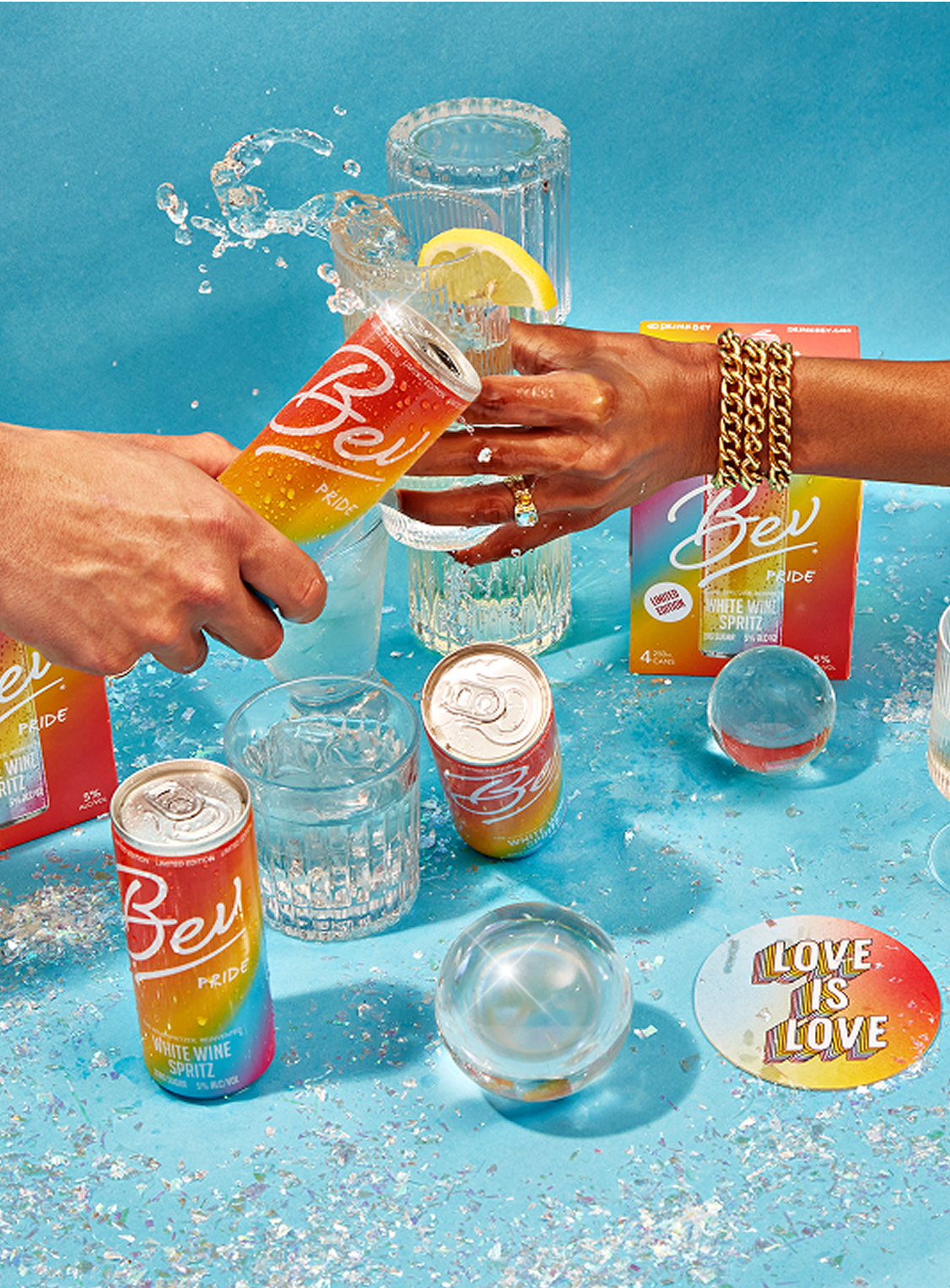
Learn best practices for your website in the highly competitive food and beverage industry, covering all elements of a successful site for both restaurants and consumable products.
Introduction
The food and beverage industry is a highly competitive space, and nowadays, almost all businesses utilize a website. Whether your website is for a restaurant or food and beverage products, ensuring your site is optimized is crucial for competing in this robust landscape. This blog will dive into best practices for your website in the food and beverage industry, covering all elements of a successful site for both restaurants and food or beverage products.
Prioritize High-Quality Visuals
High-quality visuals are important for most websites, specifically in e-commerce, but when it comes to food and beverages, images and videos become increasingly important. 82% of people say they would order a food or beverage item just because of how it looks in a photo. High-quality images can make a significant difference in capturing customer interest, so ensuring your visuals are optimized is crucial.
When capturing photos and videos of your offering, use professional, high-resolution visuals. Invest in your images and showcase textures, colors, and the presentation of your food or drinks. Videos or GIFs can add an engaging element to your site as well. When working with videos, ensure they are of the same high quality as your photos to ensure your customers are getting the most out of your site.
Remember that when it comes to visuals on your website, having large files throughout can slow down page loading times, so it is important to compress any photos or videos. A slow site speed can significantly increase bounce rates, so use file compressors when adding these elements to your website.
Doughy is a great example of implementing product imagery and GIFs on their site. Our team at Udundi designed and developed their award-winning website with image prioritization in mind.
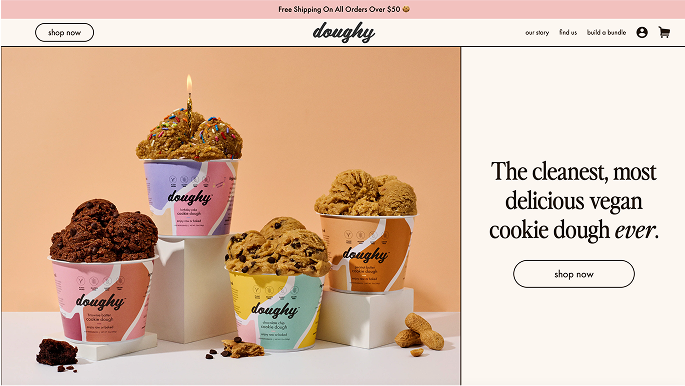
Encouraging Bundles and Customizations
Taste is highly personal, especially when it comes to food and beverages. Giving customers the ability to customize their orders, like choosing flavors, sizes, or product combinations, can significantly boost engagement and sales. Offering bundle options not only makes shopping more fun and interactive but also increases your average order value.
A great example of this is Blakery’s Build-a-Box feature, which allows customers to mix and match favors to create a personalized box of their favorite treats. Features like this make it easy for customers to get exactly what they want while also encouraging them to buy more at once.
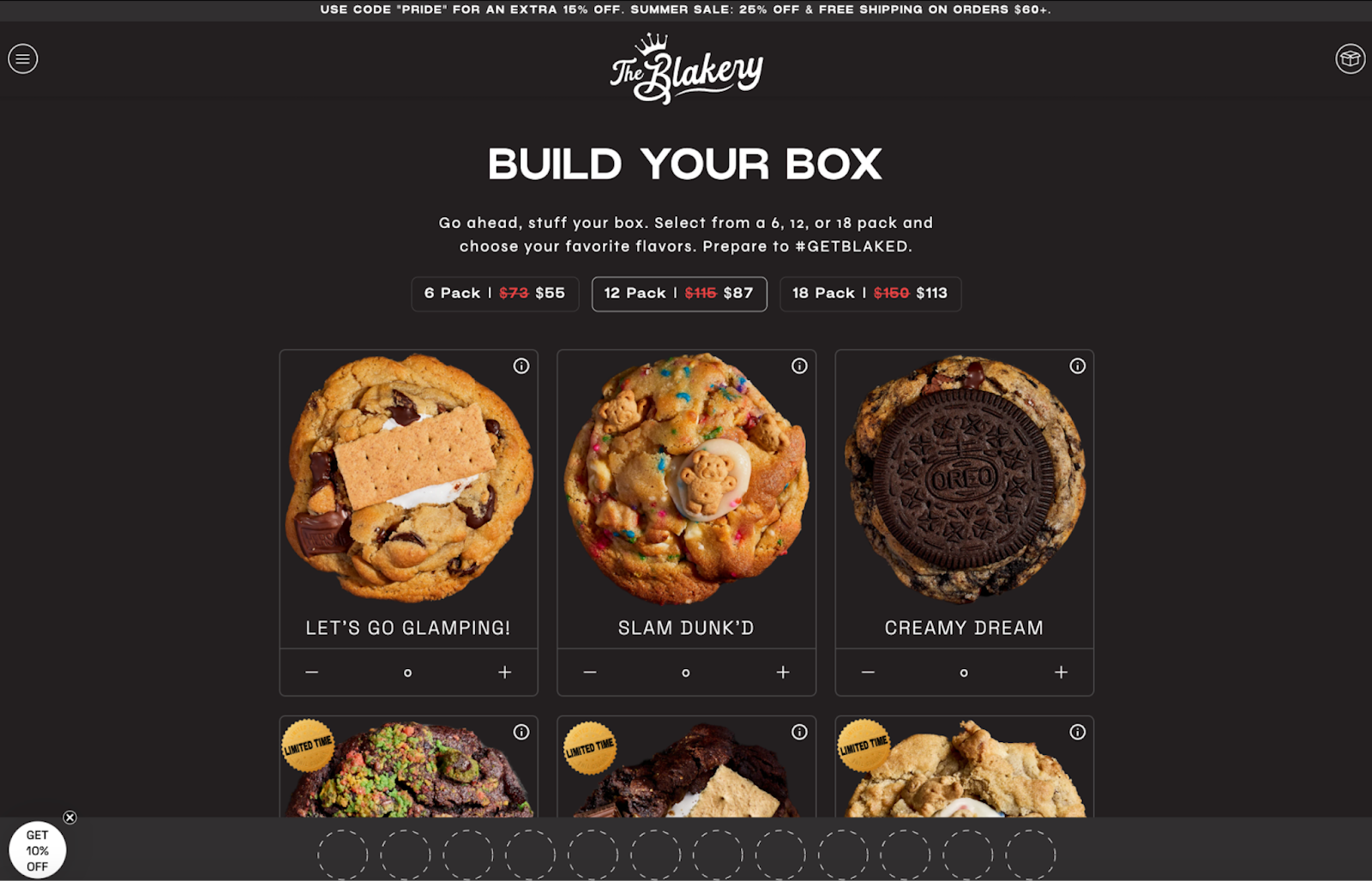
Incorporate Customer Reviews and Trust Badges
Customer reviews and trust badges both achieve a similar purpose, which is building credibility for your brand. Trustworthiness is especially important when it comes to food and beverages, so ensure you are using your site to instill trust in your customers.
Social proof can influence purchase decisions and build trust with potential customers. Display customer reviews prominently on your site to show visitors that real people have tried and loved your offering. You may also allow customers to leave reviews directly on your site to make it easy to gain and display reviews. Similarly, user-generated content, such as social media posts featuring your products, further showcases both customer opinions and visuals of your offering.
Like customer reviews or testimonials, trust badges provide a reason for customers to trust your brand. Especially for e-commerce food and beverage sites, trust badges are highly important for establishing credibility. You must ensure your customers trust the products you are offering and feel confident in providing their credit card information.
Quantum Energy Squares integrates customer reviews across their site, including product pages, their homepage, and landing pages. They feature real customers and athletes, often pairing reviews with photos of the reviewers to add a personal, authentic touch.
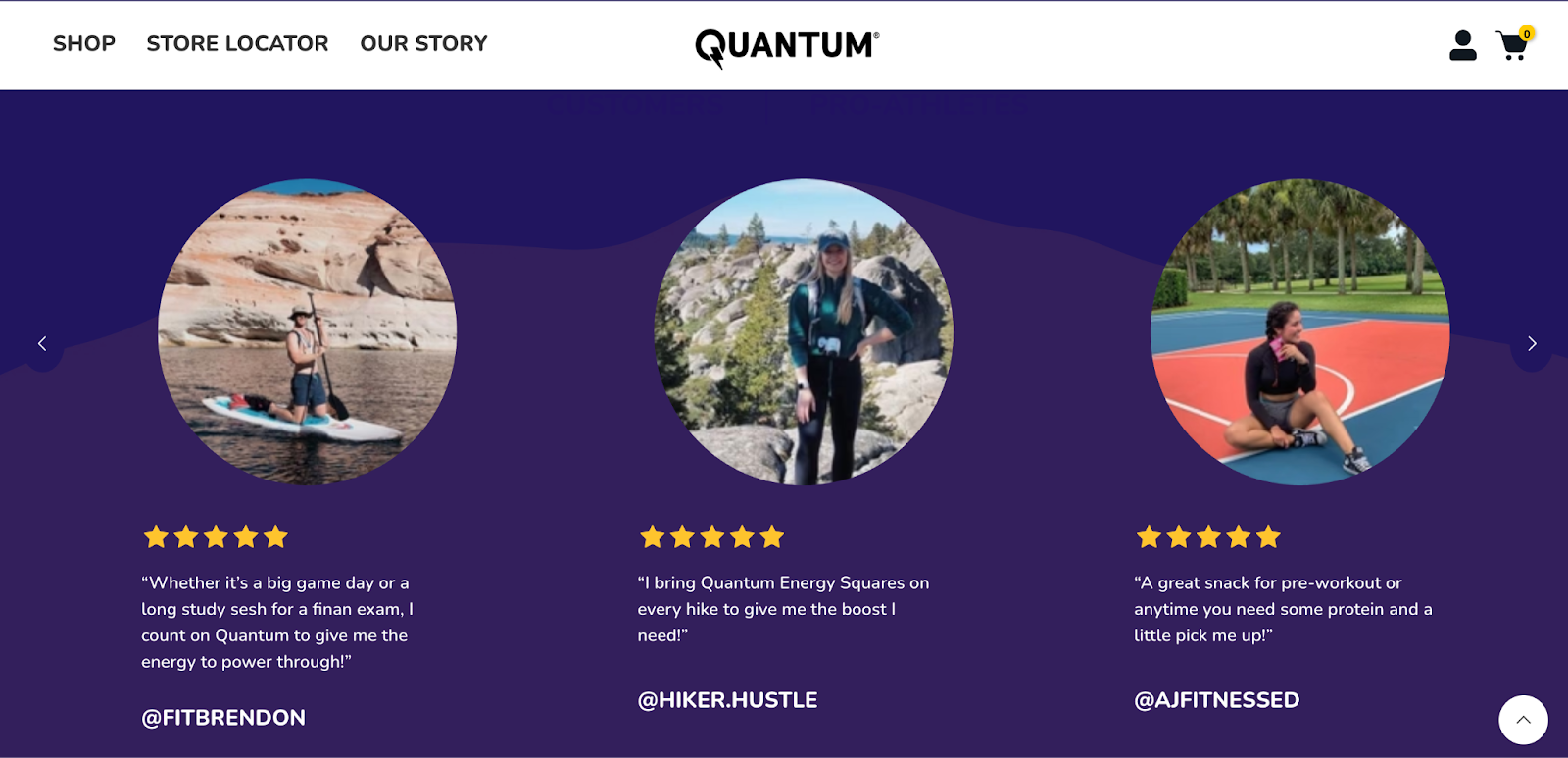
Make Your Call-To-Actions Prominent
Call-to-action (CTA) buttons are a key element of any website, regardless of industry. They guide your customers to take the action you want, whether that’s making a purchase, reserving a table, or subscribing to a service.
Any call-to-action should be action-oriented and immediately grab attention through contrast or color, so users are naturally inclined to take the next step. For restaurant websites, make sure your reservation and online ordering buttons are prominent. For food and beverage websites, highlight your “buy now” buttons and make them easy to find.
You should also consider offering a subscription model to keep customers stocked on their favorites without having to reorder manually. For example, Rasa uses a custom subscription portal and a quick-buy button, making it even easier for customers to purchase their products.
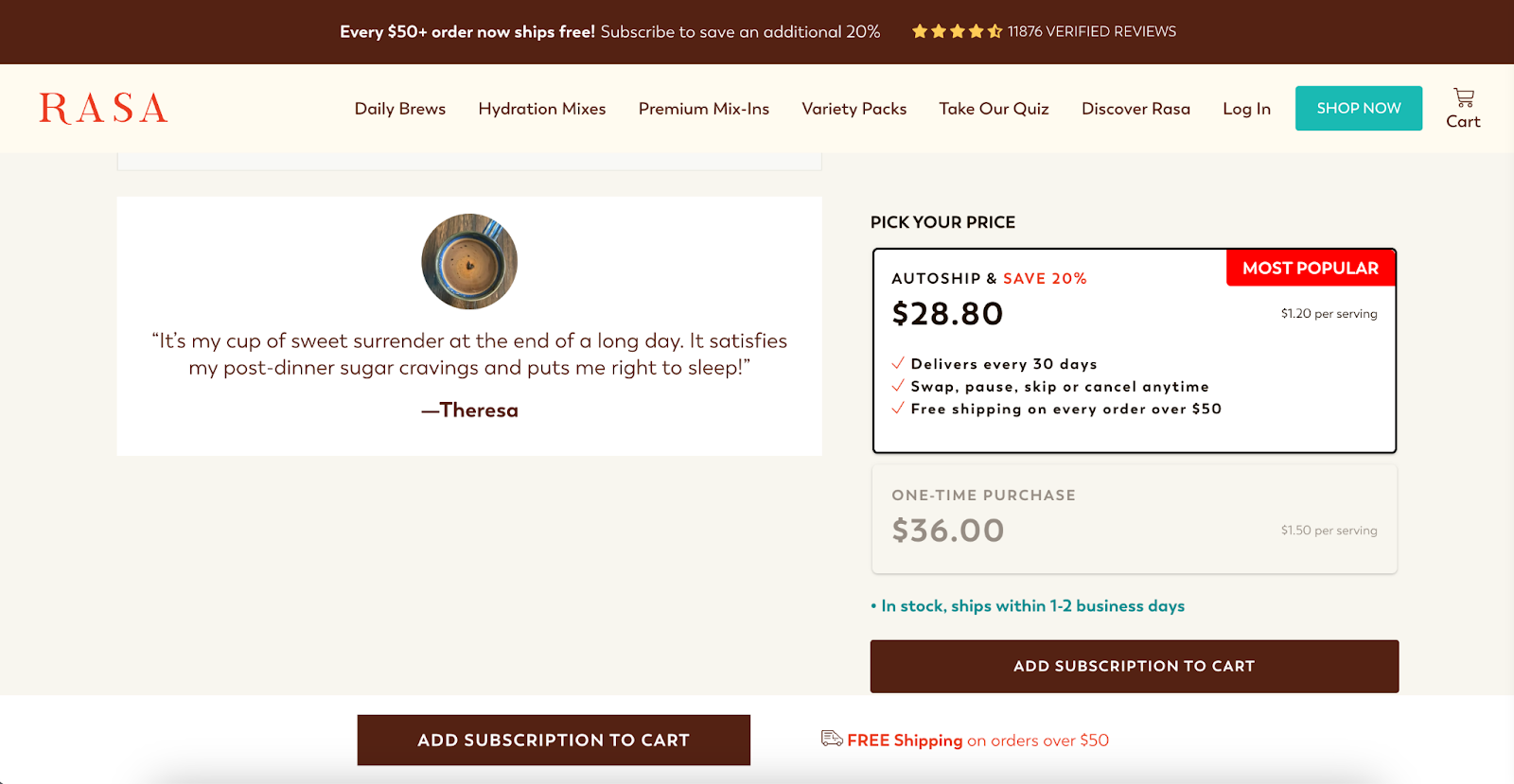
Optimize for Mobile Users
No matter your industry, ensuring your digital assets are optimized for mobile users is critical, as over half of internet traffic comes from mobile devices. Mobile optimization is the process of ensuring that your website is mobile-friendly so that users can operate your website seamlessly. The standard in today’s world is to design with a mobile-first approach and then expand your designs to be fully responsive across all devices.
Elements to focus on when optimizing your site for mobile users:
CTA Buttons: Ensure buttons are easy to click on without overwhelming the page. They should be large enough for accessibility but not so big that they dominate the screen.
Images and Videos: Optimize visuals to maintain quality while minimizing load time and screen space usage.
Text: Keep text readable without requiring excessive scrolling. Use a balanced font size for a smooth user experience.
Navigation Bar: Make the navigation bar compact, but easy to tap, allowing seamless site navigation.
Search bar: Like CTA buttons and the navigation bar, the search bar should be easily clickable without taking up too much space.
Doughy also does a great job optimizing for mobile users with easily clickable CTAs, optimized images, and clean, readable text.
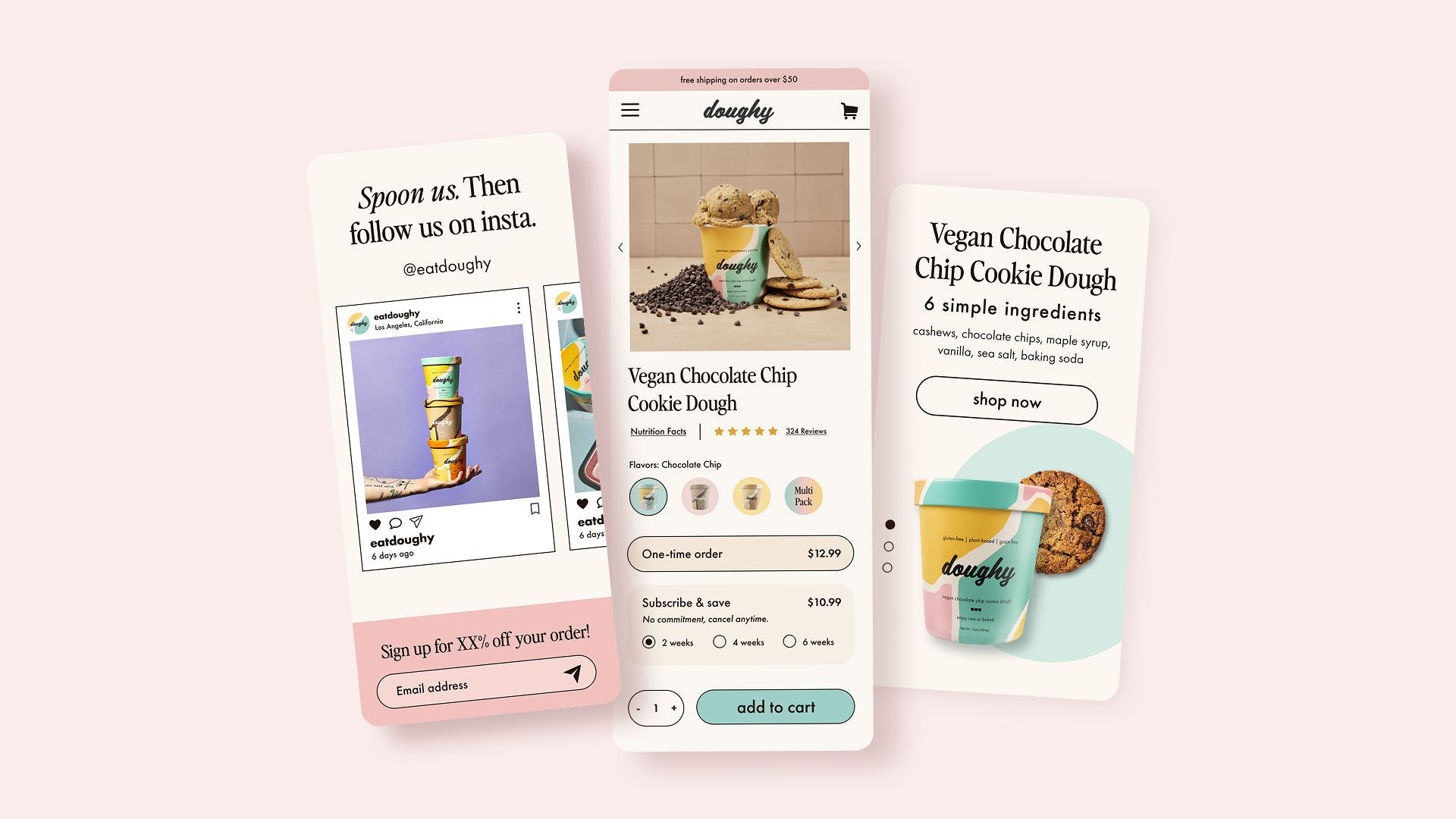
Restaurant-Specific Tips
Make menus easily accessible.
Many of your site visitors will be looking for your restaurant menu, so ensure it is easily accessible on your page. Make your menu readable, simple, and easy to navigate, and include photos for a more visual experience.
Include your address, contact information, and store hours.
Providing your restaurant’s address, contact information, and store hours on your website is essential for ensuring a seamless customer experience and driving foot traffic. Clear and accessible location details help potential diners easily find your restaurant, while contact information allows them to make reservations or ask about menu options. Displaying accurate store hours prevents confusion and ensures customers arrive when the restaurant is open. Without this information, potential guests may choose a competitor with clearer accessibility, ultimately impacting customer satisfaction and sales.
Showcase photos of your food and drinks.
As we explained earlier, a whopping 82% of people say they would order food because of how it looks in a photo. While photos are important for any product, we want to emphasize the importance of visuals specifically for restaurants. With apps like Yelp, it is becoming more and more common for customers to search images of menu items before ordering, so make it easy for your customers to find photos of your food on your website.
Conclusion
In today’s competitive food and beverage industry, having an optimized website is essential for attracting and retaining customers. From high-quality visuals to customer reviews that build trust, every element of your site plays a role in creating a seamless user experience.
Our team at Udundi has partnered with many different food and beverage brands to design and develop e-commerce websites that drive growth, including Bev, Doughy, The Blakery, Quantum Squares, Rasa, and Earthside Farms. If you’re looking for an agency partner strategy for landing pages, new features, branding, or a custom theme, reach out; We’d love to chat!



